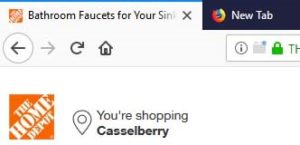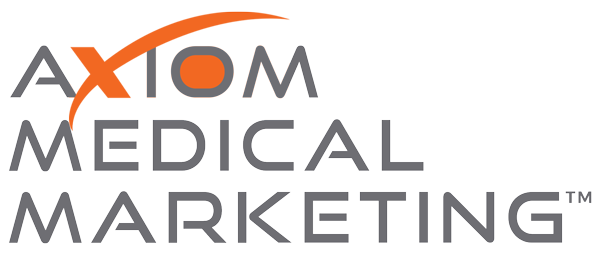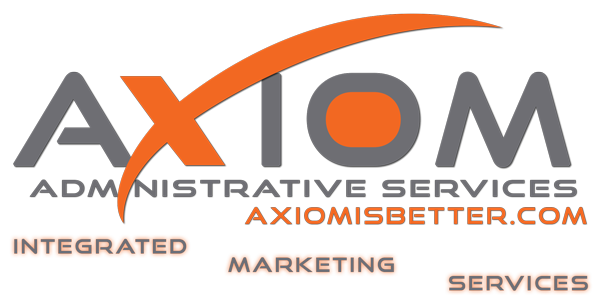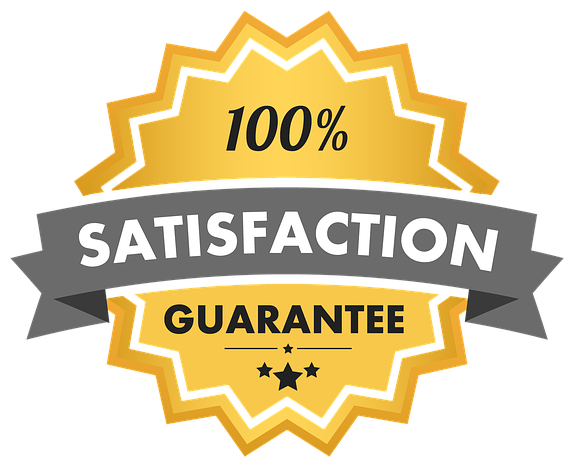Integrating Social Media into Your Website
 Axiom has often written about the growing power of social media as a critical part of an organization’s branding strategy and overall digital marketing solution. Across all age groups, Americans now turn to social media as a source of entertainment, product information, shopping advice and countless other applications (see “Updated Statistics for Social Media”) . Social media channels should be a seamless part of good digital marketing solutions and a successful branding strategy.
Axiom has often written about the growing power of social media as a critical part of an organization’s branding strategy and overall digital marketing solution. Across all age groups, Americans now turn to social media as a source of entertainment, product information, shopping advice and countless other applications (see “Updated Statistics for Social Media”) . Social media channels should be a seamless part of good digital marketing solutions and a successful branding strategy.
But how do you leverage the power of social media on your site? Most businesses, professional practices and nonprofits are probably missing out on potential contacts, referrals and sales that can come from social media sources. Here are some simple suggestions for integrating your website and social media platforms to fashion a digital marketing solution that works.
Place Social Media Buttons on the Home Page. This seems obvious but some cheap web designs ignore this basic rule. Social media buttons should be displayed in their own distinct section of the webpage, probably on the top, bottom or along the side of your home page. Ideally, they should remain in that same location as the user moves from page to page in the website. It’s a good idea to ensure that users don’t leave your website altogether by clicking a social media button, so create links that open in new tabs without leaving your page.
Choose Social Media Links Carefully. If you are the owner or operator of a business or professional practice, it is not likely that you have time for every single social media platform. You must choose the ones that will be most effective for your purpose. Do not link out to social media channels in which you are not active. By “active,” we mean that you post or update at least weekly. If you do not have the time for doing this across multiple platforms, then drop the least productive and delete the links or buttons.
Use “Share” Buttons. Share buttons make it easy for website viewers to seamlessly recommend or share knowledge about a product, service or idea. If you have resources like a blog or articles on your website, make it as easy as possible for readers to share it with others. Social media share buttons should be displayed in an easily seen location and they should be used across all of your digital marketing solutions. This means placing them on your Facebook and Google+ pages, as well as your website. If you do not know how to use share buttons, get the advice of a professional internet marketing agency.
Know the Platform’s Terms and Conditions. A personal Facebook page should not be used for promoting a brand name, and there are rules to follow when running a promotional page. Likewise, Google+ and other platforms have a set of “terms and conditions” for use. Not adhering to these rules can get your page removed.
Do Not Overuse or Abuse Social Media Platforms or Share Buttons. The content you place on social media platforms should be compelling, useful information that is easily shareable. Littering your website with excess social media share buttons will detract from your overall branding strategy. When you post on a platform or include a share button, be sure that the material adds value to the viewer’s experience. Is it useful? If not, delete it.
Learn to Use Analytics. Tools like Google Analytics can tell you a lot about the ways in which individuals use your social media and share buttons. Google Analytics tracks vital statistics on a number of website elements, including social media and share buttons. If you do not have the time to track this for yourself, it might be wise to turn the job over to a professional internet marketing agency or an expert in SEO techniques.
Social media platforms are an ever more important part of branding strategies. If you are struggling to find digital marketing solutions that work and branding strategies that make your business stand out, turn to Axiom. Your business deserves more than a cheap web design, and Axiom is more than an internet marketing agency. Axiom Administrative Services has the professional skill and small business SEO skills needed to get your web presence the ranking it deserves.
Our business marketing team can combine traditional marketing tools like direct mail advertising with local SEO services to build your branding strategy. Please visit Axiom’s small business services page or call Axiom at 800-888-6348.
Under the Website Hood, Page Titles and meta descriptions (Important parts of a website you do not see)
Behind every webpage, there is a complex of code that controls both the page appearance and critical details of the site’s SEO strategy. Cheap web design often ignores these ‘under the hood’ details; as a result, a well thought out digital marketing solution may be wasted. A successful SEO strategy will make your site as easy as possible for Bing, Google and other search engines to find you.
A good SEO strategy is an important part of a branding strategy and essential to creating digital marketing solutions that work. The truth is that a clever amateur can outline an SEO strategy that will work, but cheap web design will not implement it correctly. For that, you need the services of an internet marketing agency or professional SEO services provided by a firm like Axiom.
Let’s look at two website elements that are very important to SEO strategy but not obvious to a casual observer: page title tags and meta descriptions.
Every time you use a search engine, you see page title tags but probably do not realize it. The search engine results page (SERP) will contain a list of results that match the term you have entered. Each of those results will have a headline bold tag and a ‘snippet’ of text below it. Clicking it will take you to the page whose title tag matches the search term you entered.
Here is an example for the search term, “bathroom faucets.” Entering that term will return a SERP with numerous suggestions, one of them for Home Depot. That result will look like this –
https://www.homedepot.com/b/Bath-Bathroom-Faucets/N-5yc1vZbreo
Browse our vast selection of in-style and durable shower faucets and bathtub faucets. Shower fixtures can make a difference. Indulge in a waterfall showerhead …
Bathroom Sink Faucets · Nickel – Bathroom Faucets · Bathroom Faucets – Bath
Notice that the headline of this result contains the exact search term entered. The people who designed this page included the words “bathroom faucets” in the page title because they realized that this would be a common term entered in search engine queries. Professional SEO services would make certain that this common search term is included in the page title. Frequently, this is the first (and maybe the only) thing most people will see. That is one reason that page title tags are so important; the page title tag is a message to the world!
Clicking on the headline of that SERP result will take you to the Home Depot shopping site, but not its home page. Instead, you will be directed to a sub page of the site. In the HTML code for that page you would find this code-
<title>Bathroom Faucets for Your Sink, Shower Head and Bathtub - The Home Depot</title>
If the page title has been properly named using SEO techniques, the browser tab will look like this –
 The browser tab contains exactly what the user is looking for! The marketing team has not only devised a SEO strategy, it has applied an element of that strategy (the search term, “bathroom faucets”) to this subpage title. Keep in mind that there might be dozens, even hundreds of other subpages on this site with page titles like “kitchen faucets,” “luxury faucets,” or “shower faucets”; all of these are designed to attract the attention of a search engine looking for a particular product, service or idea.
The browser tab contains exactly what the user is looking for! The marketing team has not only devised a SEO strategy, it has applied an element of that strategy (the search term, “bathroom faucets”) to this subpage title. Keep in mind that there might be dozens, even hundreds of other subpages on this site with page titles like “kitchen faucets,” “luxury faucets,” or “shower faucets”; all of these are designed to attract the attention of a search engine looking for a particular product, service or idea.
A common mistake made in cheap web design is to give pages a vague or generic title, like “services” or “products.” If you are drawing a graphic map of your website, these titles make sense, but few people issue search terms for “services.” Better page titles would be “plumbing services,” “faucet installation” or “shower installation.”
Title tags work with the meta description (the text below the title tag). In the case of the Home Depot search result above, this is the meta description — a sentence or phrase that adds more information about the page.
<meta property="og:description" content="Browse our vast selection of in-style and durable shower faucets and bathtub faucets. Shower fixtures can make a difference. Indulge in a waterfall showerhead or conserve with a water saving showerhead."/>
Again, you see that the website’s branding strategy and SEO strategy have instructed the designers to include likely keywords (search terms), such as “shower faucets” and “bathtub faucets.” This meta description works with the page title to help users find the product or service they want.
Most people can come up with a list of likely keywords. Taking advantage of those search terms requires careful thought and detailed planning. Each page and subpage in a website should have a well-thought-out page title and meta description; there may be dozens, hundreds, even thousands of such pages. That is one reason cheap web design is not going to produce digital marketing solutions that work.
If you are struggling to find digital marketing solutions that do work, turn to Axiom. Your business deserves more than a cheap web design, and Axiom is more than an internet marketing agency. Axiom Administrative Services has the professional skill and small business SEO skills needed to get your web presence the ranking it deserves.
Our business marketing team can combine traditional marketing tools like direct mail advertising with local SEO services to build your branding strategy. Please visit Axiom’s small business services page or call Axiom at 800-888-6348.
What Do Members and Donors Want From a Nonprofit Website?
 Like any successful business, service provider or professional practice, nonprofit organizations must have a branding strategy, a search engine optimization strategy and even direct mail marketing solutions. A professional website (not a cheap web design) is a key element in developing any branding strategy, including those of nonprofits.
Like any successful business, service provider or professional practice, nonprofit organizations must have a branding strategy, a search engine optimization strategy and even direct mail marketing solutions. A professional website (not a cheap web design) is a key element in developing any branding strategy, including those of nonprofits.
But what do the viewers, the members and the donors who support NPO’s want from a web experience? To say the least, this is an important question; those members and donors are the ones who make an NPO’s existence possible. If the nonprofit or its internet marketing agency is wise, they will be aware of the wants and needs of members and donors. Nonprofit organizations need a web presence that will create interest, inform the members and donors and make the viewer confident in their integrity and ability to fulfill a mission.
The basics that apply to all web development also apply to nonprofits. A solid SEO strategy and professional SEO services are basics. All good digital marketing solutions will produce a website that is easy to navigate, user-friendly, and as visually appealing as possible. A cookie-cutter template will not do this and neither will a cheap web design. All nonprofits have a mission and their digital marketing solutions must fit and support that mission.
Here are some “musts” for a successful NPO website and a nonprofit digital marketing solution that is fruitful:
- You Need Quality Content! Google’s ranking system recognizes a class of websites they call “Your Money or Your Life” websites. These are websites that ask the viewer to spend money (as in donate) or make a life changing decision, a commitment, an important choice. These websites are called to a higher standard of website content. They are not there to amuse or to distract, but to inform, inspire commitment and to recruit volunteers and members.
Writing quality for a nonprofit is more important than it is for other websites. The viewers of these sites are seeking real information about an important subject. It might be a church mission, an animal rights cause, a political action committee or any other public interest topic, but it must inspire the viewer to take action, to donate or to join and volunteer. The website should be free of distractions with clear and concise writing. The graphic content (pictures, graphs, illustrations, etc.) should tell a story. The pictures should be real scenes from the NPO’s activities, not copied from other sources. The most important content should be “above the fold” when viewed on a computer or mobile device screen. Do not force the viewer to scroll down far to see the main point.
- You Need A Social Media Focus. Social media is a perfect platform for nonprofits. The social media bring together people with common interests, even if they are widely separated on the map. “Save the Children” activists or “Free Tibet” campaigners can connect with one another and act in union. Social media has received a lot of negative attention lately (much of it deserved), but it remains a powerful tool for all nonprofits. Your website can be the center of social media activities that extend to Instagram, Facebook, Google Plus and others. The social media “Apps” you choose should be placed prominently in your homepage and throughout the subpages.
- You Should Have An Email Sign-up. Do not make viewers search for a way to join up or volunteer. Even if they don’t have the financial resources to donate, their membership helps your circulation numbers and when they click on a link it helps your page ranking. Place a link to your newsletter in this section and encourage subscription, but do not start sending them unsolicited newsletters.
- A Media Coverage Section. If your nonprofit is covered in any newspaper, broadcast or podcast segment, make this known to page viewers
- A Donate Button. How could we forget this? A few nonprofits are lucky enough to have some funding source from charitable foundations or public interest groups, but many exist month to month on donations. The worthiest of causes cannot function without money, so make giving easy.
Axiom Administrative Services understands the needs of nonprofits. If your ministry, nonprofit or public advocacy group is struggling to find digital marketing solutions that work and a branding strategy that makes you stand out, turn to Axiom. Your nonprofit deserves more than a cheap web design, and Axiom is more than an internet marketing agency. Axiom Administrative Services has the professional skill and local SEO skills needed to get your web presence the ranking it deserves. Our team can combine traditional marketing tools like direct mail advertising with local SEO services to build your nonprofit branding strategy. Please visit Axiom’s services page or call Axiom at 800-888-6348.




